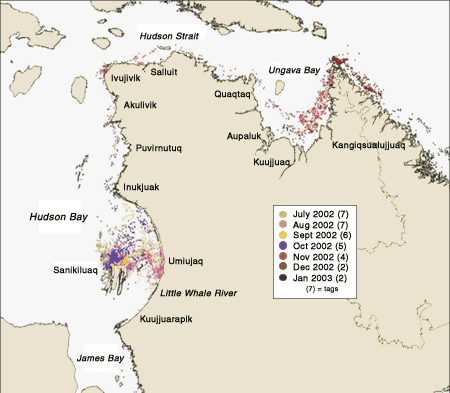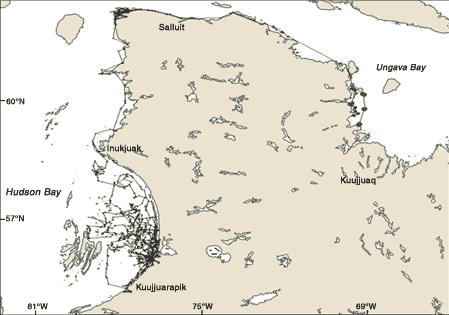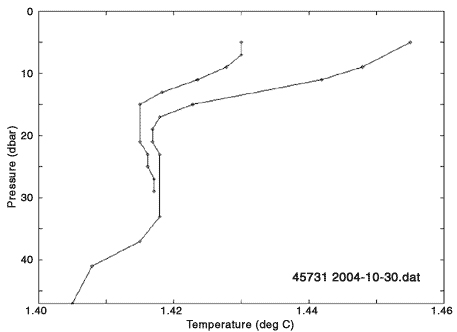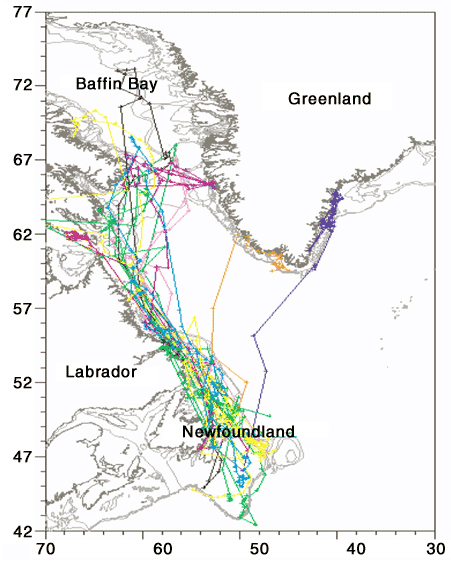Satellite recorders
Satellite-linked transmitters are miniaturized sensors recording physical data such as the equipped animal's depth, swimming speed, water temperature, salinity, etc at regular intervals (e.g. every 10 seconds).When the animal surfaces, a salt water switch on the transmitter detects when the transmitter is out of the water and initiates a transmission that can be received by an Argos satellite if one of these happens to pass over the animal's position within a 5000 km diameter. Argos satellites are polar orbiting, each passing over the North and South poles ≈14 times per day. Data received by the satellite are retransmitted to a ground receiving station, where it is made available to researchers.
Satellite recorders can also provide information regarding the animal's location. Given that satellites are orbiting around the Earth at a known velocity and that transmitters have a constant transmit frequency, measuring the Doppler shift among subsequent signal receptions means that the transmitter's position can be calculated. Transmitters can also be outfitted with a GPS receiver, and can therefore emit the animal's position to the Argos satellite along with other measured parameters. More information on the ARGOS satellite system can be found at: http://www.argos-system.org/
Satellite transmitters have been deployed on a variety of marine mammals in Canada including seals, belugas, blue whales, etc. In eastern Hudson Bay, the animals tend to remain in the arc area, then migrate north and out of Hudson Bay during fall. It is possible to follow individual animals and to obtain other information from transmitters such as temperature-depth profiles for information on oceanographic conditions.
Transmitters have also been deployed on seals. Animals are captured in spring, held until the moult has finished and then released. In this way their movements during the next 10 months can be monitored as the animals complete their annual migration to the Arctic and then return.

Movements of beluga whales equipped with satellite transmitters. All animals were captured at Little Whale River.
- Date modified:


